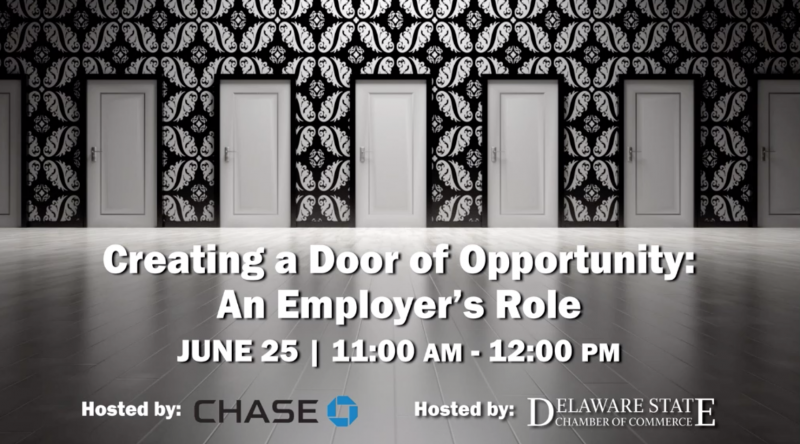The Delaware State Chamber of Commerce hosted the event Creating a Door for Equal Opportunity: An Employer’s Role June 24, to discuss ways that black workers can be given equal opportunities in the workplace.
The event was led by Mike Quaranta, president of the DSCC. It also included guest speakers Dr. Stephanie Creary, a professor at the Wharton School of the University of Pennsylvania, and Dr. Tony Allen, president of Delaware State University.
Creary teaches a diversity course at the University of Pennsylvania, which has helped her create four important steps for leading conversations about race in the workplace. It is called the R.A.C.E. framework. Creary says that managers and employees often feel uncomfortable talking about race, so the first step is to reduce anxiety by talking about race anyway.
“I’ve learned that we have a very hard time even saying the word ‘race,’” Creary said.
Often, she said, people are taught to be “colorblind,” or say that they don’t see race. But Creary says that people who have this mindset actually tend to engage in more racial bias.
To reduce this anxiety, Creary recommends managers help employees feel less anxious and more efficacious about engaging in conversations related to race, equity and inclusion. Norms should be discussed prior to engaging in difficult conversations about race, she said.
The second step is to accept that anything related to race is either going to be visible or invisible. Creary said to think about what is both gained and lost when race is invisible or hyper-visible. Managers can help employees find the space in between the extremes of invisibility and hyper-visibility, which Creary says will normalize race as a dimension of diversity that is meaningful in the workplace.
The third step is to call on internal and external allies for help. Creary says that black managers and employees are often seen as experts on race and diversity in the workplace, even though they might not be. Everyone needs to learn how to facilitate conversations about race, Creary says, which includes white employees and managers.
She says managers can cultivate an external network with a diverse set of both internal (other managers) and external (professors, former colleagues, clients) allies. They can then help employees do the same.
The last step is to expect that leaders will need to provide some “answers,” practical tools, skill-based frameworks, etc. Creary says managers can adapt publicly available resources to do so.
Dr. Tony Allen similarly offered four key points from activist and Milton native Bryan Stevenson. The first point is to get approximate. Allen says that this means getting closer to one another, especially “those who don’t look like us” or “come from the neighborhoods we don’t come from.” Getting approximate is a key step to recognizing the disparities that minority communities go through, Allen said.
The second is changing the narrative that creates policy problems. Allen says he believes it’s very important to have an honest conversation about narrative and storytelling.
“I think the hard conversations are pretty important. Especially for those who don’t tend to have those discussions,” Allen said.
Third is to stay hopeful. Allen says what he sees now is the racial and ethnic diversity of America standing against what they see as complete injustice, which should inspire hope. He also said hope can be powerful enough to bring about real change.
Last is to be uncomfortable. Allen says it’s not uncommon to make mistakes when having these difficult conversations, or to get mad at one another.
“On balance, I think all of that is OK. What’s not OK is silence,” Allen said.






















































